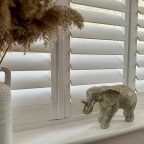
Heating engineer shares FIVE unknown hacks to draught proof your home
The cold snap has finally arrived in the UK and with it, experts at MyJobQuote are recommending Brits draught proof their home as temperatures drop as low as -10C during Storm Isha's Arctic cold snap.
Matthew Jenkins, Heating Engineer and Expert at MyJobQuote shares, “If you’re turning up the central heating and finding it doesn’t stick around for long, there’s a problem. Draught proofing is the art of blocking up unwanted gaps that let cold air in and warm air out. Not only that, but it’s one of the easiest and most effective ways to save energy and money on bills over autumn and winter. Draughts are uncontrolled, waste a lot of heat and even increase the chance of mould.”
MyJobQuote also found that demand for solutions for draught repairs in the home increase by 700%* in autumn and winter, more than any other repair. With this in mind, they’ve revealed five easy ways to draught proof your home to reduce heat loss.
Place foil behind radiators to prevent heat loss through walls
Insulating a radiator might sound redundant, however 50% of heat emitted from the radiator is directed at a wall which can lead to a draughty room when a lot of it is absorbed into the wall. Installing reflective foil insulation behind your radiators results in more heat being reflected into the room instead of being lost (and a roll of foil is less than £2!)
Cover up keyholes and letterboxes
Though only small, heat can be lost through the keyhole of an old front door as well as letterbox and around the frames. To draught proof a front door, purchase a key hole cover and letterbox draught excluder. It’s also wise to check the rubber seal of the door for any dryness or signs of and give it a clean of any debris while checking. Keeping on top of this reduces the chance of erosion to the rubber seal which could let warm air out if damaged.
Use heavy duty curtains over the draughtiest areas
Heavy duty, floor length curtains can reduce cool air being let into the property and stops warm air from being able to exit as easily. Due to their thicker nature, they’re also double as black out curtains! Thermal curtains not only help with windows but can be placed over entrances to cooler areas of the home, such as internal garage doors or on the inside of your front or back door to minimise thermal inefficiency.
Soft furnishings aren’t only for cosiness - they’re better for retaining heat
Say it with us - rugs, rugs and more rugs. Harder flooring materials such as some wood flooring and tile are less useful at retaining heat. Getting large rugs to cover areas can reduce the heat that’s escaping through tile - and its much more pleasant on your toes!
Additionally, invest in long door cushions to retain heat. If there’s rooms in your home that aren’t regularly used in your home, prevent heat from unnecessarily escaping under the door by closing it and placing a long cushion in front of it, ensuring it covers the full gap.
Fill gaps in flooring, skirting boards and walls
Gaps and holes in walls aren’t only unpleasant to look at, they also hinder your home’s insulating ability. Fill them with ready mixed filler and give your flooring and skirting a once over to repair any gaps which may also be contributing to heat loss.













